Mathematical Methods and Modeling of Biophysical Phenomena – 2006
Angra dos Reis, Rio de Janeiro, March 5 – 11, 2006 
This is the fourth of a series of workshops organized by IMPA aiming at bringing together a multidisciplinary group of scientists to study problems in the biophysical sciences upon which mathematics may have an impact.
This year’s main topics are:
-
- Evolutionary Dynamics
- Structured Population Dynamics
- Kinetic Models
- Modeling of Complex Phenomena
- Protein and DNA Modeling
Introductory Course (Jan-Feb 2006):
Introduction to Mathematical Modeling of Biophysical Phenomena
Tuesday and Thursday from 5:00 to 6:30 pm.
Course Material. Click here for a link to Gintis book.
Another interesting site: http://www.cellbio.com/images.html
Minicourses:
Structured Population Dynamics.
Abstract: This minicourse will be divided into three lectures aimed atgraduate student level (Master/Phd). The first one will be “From differential systems to structured populations” The second one will be “Population balance laws” The third one will be “The generalized entropy method”
References:
1. Michel, P., Mischler, S., Perthame, B.; General relative entropy inequality: an illustration on growth models. J. Math. Pures Appl. 84 (2005) 1235 – 1260
2. Metz, J.A.J., Diekmann, O.; The dynamics of physiologically structured populations. Lecture Notes in Biomath., vol. 68, Springer-Verlag.
3. Perthame, B., Ryzhik, L.; Exponential decay for the fragmentation or cell-division equation. preprint ENS DMA – 03 – 17.
Julie Mitchell, University of Wisconsin
-
- Abstract: Protein interactions are at the heart of most biological processes. Interactions can be studied at many levels, from the molecular to cellular level and beyond. The short course will address two important aspects of modeling protein interactions: protein docking and biological pathways.
-
- At the molecular level, proteins bind to other proteins based on biophysical properties. The characteristics that allow two proteins to bind include surface geometry and charge distribution. Techniques for understanding protein biophysics are most accurate at the particle level (quantum mechanics), but various approximations can make calculations more tractable. Through the use of partial differential equations, optimization and Fourier analysis, the approximate protein binding geometry between two proteins can be predicted.
-
- At the systems level, networks of proteins interact within biological pathways. Most important physiological processes are controlled not by a single interaction between molecules, but rather by a cascade of interactions. At the structural level, one is concerned with the binding geometry between a pair of molecules. At the systems level, the frequency of such events is of primary interest. Each class of molecule becomes a variable in a system of coupled nonlinear differential equations. Understanding the behavior of these dynamical systems has a multitude of uses within medical science.
Organizing Committee:
P. Markowich (Vienna)
M. Nowak (Harvard)
J.Palis (IMPA)
B. Perthame (ENS-Paris)
A. Vicino (Siena)
J.P.Zubelli (IMPA)
Estrada Dona Castorina 110, Jardim Botânico
Rio de Janeiro, RJ, CEP 22460-320, Brasil
E-mail: eventos@impa.br


